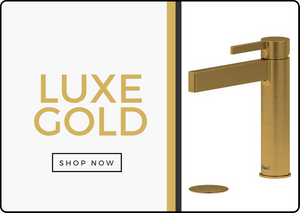
Choosing The Right Material For Freestanding Tubs
Freestanding bathtubs are bathtubs that are finished on all sides and able to stand alone. Often they are thought of as more a part of your décor rather than just a bathroom fixture. However, this change in its perception—i.e. from thinking of the bathtub as a decorative accessory rather than a purely functional equipment—is far from a modern phenomenon, and dates back to the first recorded example of a bathtub that was discovered in 1700 BC, on the Grecian Island of Crete.
The First Bathtub was a five feet ceramic structure, constructed using pottery. But unlike the modern day bathtub that is available to the average homeowner, bathtubs in that era were works of art, decorated with intricate figurative paintings, and only made available to royalties due to their high cost. Given the sculptural attributes bestowed upon bathtubs of the time, it comes as no surprise that the First Bathtub was found in the Palace of Knossos.
Following that time, issues of cleanliness and sanitation had taken a backseat over other socio-political debates, with the 19th century having witnessed some of the worst epidemics as a result of uncleanliness, marking a turning point in the world of bathroom sanitation and plumbing. It is the later easy availability and cheaper costs of plumbing pipes in the 20th century that enabled the resurrection of the modern freestanding bathtub as we know it today, allowing for its easy availability to the everyday homeowner, in various sizes, shapes, and materials!
In the contemporary society, a freestanding bathtub functions as a statement piece, that can serve as a focal point of a bathroom, influencing the look and feel of your space.
There are a wide variety of options available, sometimes making it tricky to decide on the perfect freestanding tub for your bathroom.
Choosing the right material for your needs is one important thing to consider when designing your dream bathroom. Material options can include acrylic, cast iron, or solid surface.
Acrylic Freestanding Bathtubs
- Widely available in different shapes and sizes
- Lightweight material that makes it easy for transportation and installation
- Soft and glossy material that helps to retain heat
- Easy to clean and maintain due to its non-porous surface
- Available in a wide variety of colours depending on the model selected
- Acrylic tubs are a very popular and affordable material
- They can be prone to scratches and small chips, but acrylic can be repaired
- Neptune is a popular retailer of acrylic freestanding bathtubs, available in many different designs and shapes and sizes
 The Neptune Tub is an example of one of the many acrylic freestanding bathtubs that comes with a lot of benefits including a smooth glossy finish, availability in different colours, easy installation and transportation, etc.
The Neptune Tub is an example of one of the many acrylic freestanding bathtubs that comes with a lot of benefits including a smooth glossy finish, availability in different colours, easy installation and transportation, etc.
 The Silk cast iron Tub is an example of one of the many Cast Iron freestanding bathtubs that comes with a lot of benefits including a smooth glossy finish, durability, and a luxurious finish.
The Silk cast iron Tub is an example of one of the many Cast Iron freestanding bathtubs that comes with a lot of benefits including a smooth glossy finish, durability, and a luxurious finish.
Cast Iron Freestanding Bathtubs
- Cast iron is a raw, naturally occurring strong material that makes for bathtubs that look and feel luxurious
- Extremely durable material that is resistant to chips, scratches, dents, stains
- Cast iron material can retain heat very well
- Cast iron tubs are very heavy, may require extra supports during installation, especially if not on ground floor of home
- Due to the material these bathtubs tend to be priced much higher
- Slik cast iron freestanding bathtubs are available, with various options for enameled finishes
Solid Surface Freestanding Bathtubs
- Mix of acrylic resin and aluminum powder creates an extremely strong and durable surface
- Insulation on solid surface tubs is high, so heat is easier to retain
- Scratch, dent, stain resistant material allows for easy maintenance
- Due to the mix of materials used to create this bathtub they are heavier than standard acrylic tubs and may require extra support during installation
- Due to the premium material used for these bathtubs, the cost on them tends to be more expensive
- Victoria + Albert is a popular retailer of solid surface bathtubs, with a large selection to choose from
 The Victoria + Albert Tub is one of the many Solid Surface freestanding bathtubs, that comes with a lot of benefits including high durability, easy maintenance, and heat-retention.
The Victoria + Albert Tub is one of the many Solid Surface freestanding bathtubs, that comes with a lot of benefits including high durability, easy maintenance, and heat-retention.
Wood or stone tubs also exist and are bold choices that make a distinctive style statement, however they are both very expensive and require a high level of maintenance to retain their luxe.
Other things to consider when shopping for your freestanding tub are the tub design – you have to decide on whether you want Clawfoot, Pedestal and corner and back to the wall tubs. It is generally recommended to get a tub that is at least 67” long for your own comfort.
Freestanding tubs allow for lots of room around them, giving the room an airy feel and making the room seem larger than it is. If you want your bathroom to be a haven of relaxation where you can escape the stresses of the world then a freestanding bathtub is the right choice for you.

